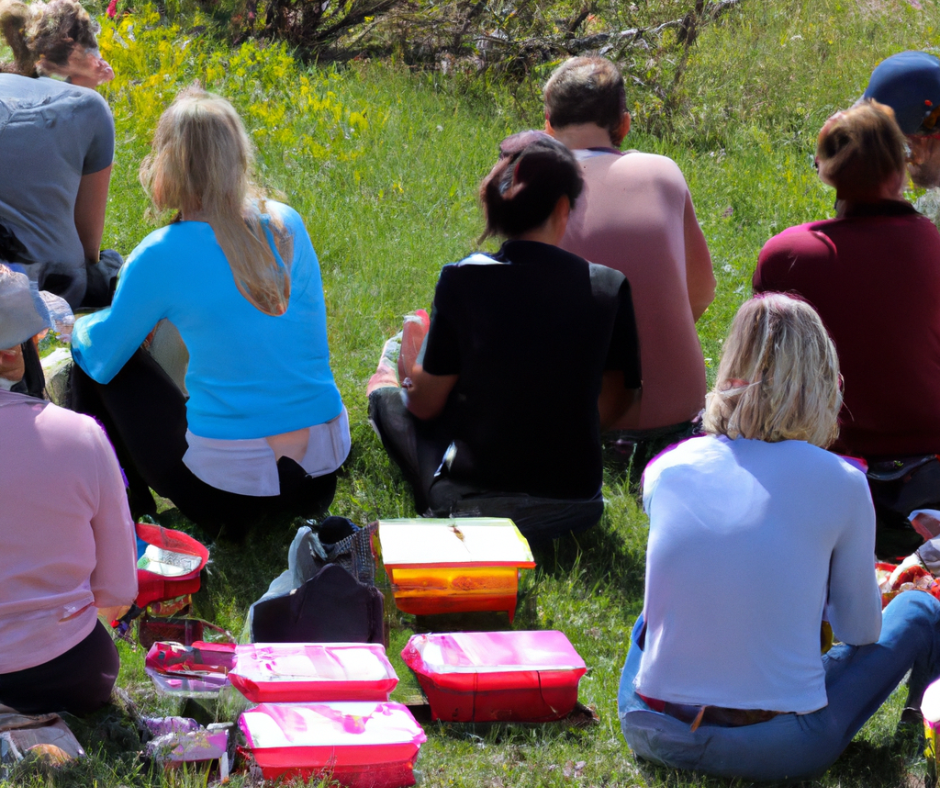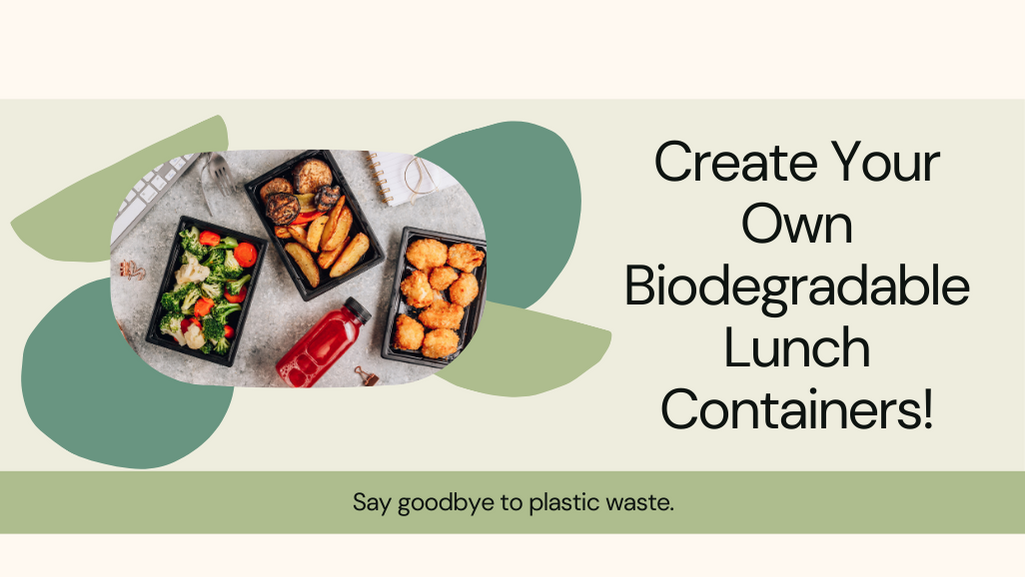
Biodegradable lunch containers are the perfect fit in a world grappling with environmental challenges.
Because the surge of eco-conscious consumerism is a testament to society’s evolving values.
Likewise, one pivotal aspect of this movement is the adoption of biodegradable lunch containers.
In a word, this is a small yet impactful step toward minimizing our ecological footprint.
Biodegradable Lunch Containers: A Brief Overview of Environmental Concerns
Environmental degradation, driven by rampant plastic usage and insufficient waste management, needs urgent intervention.
Biodegradable lunch containers appear as a practical solution to address these concerns.
Rise of Eco-Conscious Consumerism
Modern consumers increasingly prioritize sustainable choices.
As you can imagine, there is a big demand for eco-friendly alternatives.
Including biodegradable lunch containers reflects a collective commitment to environmental well-being.
Importance of Biodegradable Lunch Containers
Biodegradable containers offer a tangible means of aligning consumer habits with environmental stewardship.
So, understanding the nuances of these containers is crucial to making informed choices for a sustainable future.
Understanding Biodegradable Materials
Definition and Characteristics
As has been noted, biodegradable materials undergo natural decomposition.
And return to the environment without leaving harmful residues.
Their characteristics make them an environmentally friendly alternative to traditional, non-biodegradable options.
Distinction from Non-Biodegradable Alternatives
Certainly, differentiating biodegradable containers from their non-biodegradable counterparts is pivotal for consumers.
Above all, seek sustainable alternatives.
Again, the distinct properties of these materials impact waste management and environmental conservation.
Environmental Impact of Biodegradable Materials
First, biodegradable materials play a pivotal role in reducing environmental harm.
It seems like their decomposition processes contribute to soil enrichment.
Therefore minimizing the long-term consequences of non-biodegradable alternatives.
Equally important, this reduction in greenhouse gas emissions aligns with global efforts to combat climate change.
Minimized Plastic Pollution
Plastic pollution is still a pressing issue worldwide.
Biodegradable lunch containers serve as a practical solution.
Also, offering the convenience of disposable packaging.
Hence, without perpetuating the environmental hazards associated with conventional plastics.
Contribution to Circular Economy
The adoption of biodegradable containers supports the concept of a circular economy.
Where materials are recycled and reused in a closed loop.
In any event, this approach minimizes waste and fosters a sustainable relationship between consumers and the environment.
Types of Biodegradable Materials & Biodegradable Lunch Containers
Plant-Based Polymers
In short, it is derived from renewable plant sources.
Plant-based polymers are a promising alternative to traditional plastics.
Understanding these materials’ production and disposal processes is crucial for informed consumer choices.
Bagasse Containers
Bagasse is a byproduct of sugarcane processing.
For the most part, it serves as a versatile material for biodegradable containers.
So, exploring the properties and applications of bagasse containers enhances consumer knowledge about sustainable packaging alternatives.
Mushroom Packaging
Innovative solutions, such as mushroom packaging, showcase the potential for biodegradable materials beyond conventional options.
Additionally, understanding the science behind these alternatives fosters an appreciation for their environmental benefits.
Biodegradable Lunch Containers vs. Compostable: Unveiling the Differences
Comprehending Composting
Composting is a natural process that transforms organic waste into nutrient-rich soil.
Recognizing the role of composting is essential for understanding the distinctions between biodegradable and compostable containers.
Criteria for Compostable Containers
First, compostable containers undergo specific conditions for breakdown.
As a result, it offers a unique set of advantages.
Clarifying the criteria for compostable containers enables consumers to make choices aligned with their sustainability goals.
Practicality in Everyday Usage
In this case, we are assessing the practicality of biodegradable and compostable containers in daily life.
Indeed, it ensures that consumers seamlessly integrate sustainable choices into their routines.
Convenience and eco-friendliness do not need to be mutually exclusive.
The Market Landscape of Biodegradable Lunch Containers
Emerging Brands and Innovations
The market for biodegradable lunch containers is seeing a surge in innovation.
Especially with many brands offering sustainable alternatives.
So, exploring these emerging options empowers consumers to support forward-thinking companies.
Consumer Adoption Trends
Analyzing trends in consumer adoption provides valuable insights into the growing preference for biodegradable containers.
Also, understanding the motivations behind these trends fosters a sense of community in sustainable practices.
Cost Comparison with Traditional Containers
Addressing cost considerations is integral to dispelling misconceptions about the affordability of biodegradable containers.
Comparative analysis proves that sustainable choices can be economically viable for consumers.
Myth-Busting Biodegradable Lunch Containers Misconceptions
Common Myths Surrounding Biodegradable Materials
Misconceptions often cloud the understanding of biodegradable materials.
Therefore, debunking common myths promotes accurate information.
And empowering consumers to make informed choices.
Scientific Validity Behind Biodegradability
Scientific principles underpin the biodegradability of materials.
Unraveling the science dispels skepticism and reinforces the credibility of biodegradable alternatives as environmentally responsible choices.
Dispelling Consumer Doubts
Consumer skepticism can hinder the widespread adoption of biodegradable lunch containers.
Addressing and dispelling doubts surrounding these containers encourages a more confident embrace of sustainable practices.
Challenges and Solutions
Decomposition Period
While biodegradable materials offer eco-friendly benefits, understanding the varying decomposition periods is crucial.
Recognizing the challenges posed by differing breakdown rates helps inform waste disposal practices.
Waste Management Infrastructure
Again, the effectiveness of biodegradable containers depends on robust waste management systems.
Finding challenges within existing infrastructure and proposing solutions fosters a collaborative approach to sustainable waste disposal.
Ongoing Research and Technological Innovations
The landscape of biodegradable materials is dynamic, with ongoing research and innovations.
Staying informed about the latest advancements ensures that consumers contribute to and benefit from evolving sustainable practices.
Making Informed Choices about Biodegradable Lunch Containers
Reading Labels: What to Look For
Navigating the sea of eco-friendly labels can be overwhelming.
You may want to develop a keen eye for essential information on packaging.
For this reason, it empowers consumers to make informed choices aligned with their values.
Consumer Education Initiatives
Promoting awareness and education is integral to fostering a sustainable mindset.
Moreover, initiatives that educate consumers about the environmental impact of their choices contribute to a more eco-conscious society.
Supporting Sustainable Brands
Choosing biodegradable lunch containers involves supporting brands committed to sustainability.
For the most part, highlighting the impact of consumer choices on corporate practices encourages the growth of responsible and ethical businesses.
Case Studies
Successful Implementations in Various Settings
Examining real-world examples of successful biodegradable container implementations provides valuable insights.
These case studies showcase sustainable practices’ practical benefits and positive outcomes.
Impact on Corporate Sustainability Policies
Companies embracing biodegradable containers often influence broader corporate sustainability policies.
Exploring these impacts illustrates the ripple effect of consumer choices on industry practices.
Positive Feedback and Challenges Faced
It seems like consumer feedback and the challenges businesses face transitioning to biodegradable containers offer a holistic view.
Thus, acknowledging both successes and hurdles informs future endeavors toward sustainable practices.
DIY: Creating Biodegradable Lunch Containers at Home

Materials and Instructions
For those inclined toward hands-on sustainability, crafting biodegradable containers at home is rewarding.
Supplying materials and step-by-step instructions encourages active participation in reducing environmental impact.
Promoting Sustainability in Daily Life
Integrating sustainable practices into daily life goes beyond purchasing choices. Encouraging readers to take small, impactful actions fosters a sense of personal responsibility for the environment.
Encouraging Community Participation
Sustainability is a collective effort. Inspiring community involvement amplifies the impact of individual actions, creating a shared commitment to environmental conservation.
Future Outlook and Trends
Innovations in Biodegradable Packaging
The future holds promising innovations in biodegradable packaging. Exploring upcoming trends provides a glimpse into the evolving landscape of sustainable alternatives.
Anticipated Market Growth
As consumer awareness grows, the market for biodegradable lunch containers is poised for substantial growth.
After all, understanding the trajectory of this market empowers consumers to stay ahead of sustainable choices.
Government Policies and Regulations
Government interventions play a pivotal role in shaping sustainable practices.
Examining existing and upcoming policies sheds light on the regulatory landscape, influencing consumers and businesses.
Conclusion: Biodegradable Lunch Containers for Eco-Conscious Consumers
Summarizing Key Takeaways
By embracing biodegradable lunch containers, consumers contribute to a healthier planet.
Summarizing key takeaways reinforces the importance of individual choices in collectively safeguarding the environment.
Encouraging a Sustainable Mindset
Beyond biodegradable containers, fostering a sustainable mindset is paramount.
Encouraging readers to approach their daily choices with environmental consciousness ensures a lasting impact on the planet.
The Role of Individuals in Environmental Conservation
Individual actions weave a powerful narrative into the grand tapestry of environmental conservation.
Acknowledging the significance of each person’s role emphasizes our collective responsibility for a sustainable future.
Leave a Reply